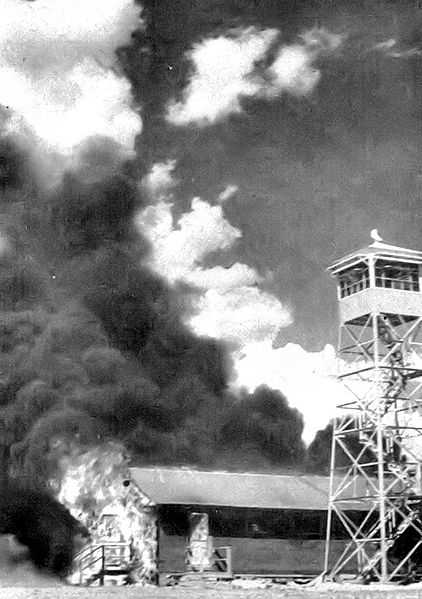Kamikaze Bats
The plan: Strap napalm bombs onto bats, and drop them over World War II Japan
/https://tf-cmsv2-smithsonianmag-media.s3.amazonaws.com/filer/c2/2d/c22d553a-a876-4a5a-98a0-471b90e457d0/wns-102611-wqcjnw-xln.jpg)
They’re small, secretive, nocturnal, and look creepy hanging upside down in caves. And at one point during World War II, they were recruited as potential killing machines.
Yep, bats as weapons of mass destruction.
“A plan to turn millions of bats into suicide bombers bearing tiny napalm time bombs was the most spectacular of the special projects at Louis Fieser’s Harvard laboratory,” writes Robert M. Neer in his new book, Napalm: An American Biography.
The project was the brainchild of Lytle Adams, a Pennsylvania dentist with a passionate hatred of the misunderstood Chiroptera.
The “lowest form of life is the BAT, associated in history with the underworld and regions of darkness and evil,” Adams wrote in a 1942 memo to President Franklin D. Roosevelt. “Until now reasons for its creation have remained unexplained. As I vision it the millions of bats that have for ages inhabited our belfries, tunnels and caverns were placed there by God to await this hour to play their part in the scheme of free human existence, and to frustrate any attempt of those who dare to desecrate our way of life.”
Seems a tad harsh, no?

Oops: The accidental incineration of Carlsbad Auxiliary Army Air Field, New Mexico, by bats armed with napalm bombs. Photo: U.S. Air Force.
The bats were to be loaded with a tiny (17.5 gram) napalm bomb, stuffed into a North American B-25, and flown over Japan. Upon reaching the target, 26,000 angry bats would be tossed out of the aircraft (they had parachutes), and would land upon highly flammable Japanese houses.
A test run over Carlsbad Auxiliary Army Air Field, New Mexico, with bats bearing dummy bombs went surprisingly well.
Fieser and his team, however, wanted to have the test filmed, so a second trial was set, using six bats with armed bombs.
Unexpectedly, the bats took off, and shortly after, the barracks burst into flames. “Flames…jumped from building to building,” writes Neer. “Many structures lay in ashes.”
“Unfortunately,” he writes, “to preserve secrecy…the team had deemed fire equipment unnecessary.” In a masterpiece of understatement, Fieser summed up the experiment: “We made a little mistake out there.”
And that was the end of the bomber bats.